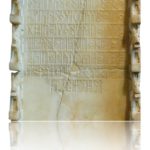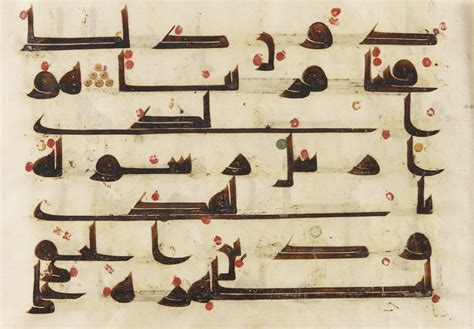
The system of Islam was built on a basic foundation of a mountain made up of the verses of the Qur’ān and the hadiths of the Prophet. Rising above this base is a vertical construction – the product of a 1,400-year accumulation of Islamic civilization in the fields of Sharī‘a, historiography, Islamic heritage, poetry, language and literature, and so on.
BY ALI JAWAD
DUE TO THE DIFFICULTIES that would be involved in carrying out a statistical analysis of human production from the time of the emergence of Islam to the present day, we will assume an imaginary percentage, whereby the Islamic inheritance of historiography, jurisprudence, tafsīr, hadiths, Qur’ānic texts, the Sunna of the Prophet and miscellaneous other products constitute the 100 percent of the totality.
If we set an approximate percentage for each of these fields, we have approximately 2 percent of the total represented by the Qur’ān and the Sunna of the Prophet, with the remaining 98 percent made up of the fields of history, jurisprudence, tafsīr, expositions, debates, theology, linguistics, human sciences and miscellaneous other products.
That is, the 2 percent of the Qur’ān and the Sunna of the Prophet represents the proportion of Islamic intellectual, sacred weight held to be the deeply established constant and the core of Islamic civilization. Most agree that the Qur’ān and the hadiths are from a single source: divine revelation and direct guidance from God Almighty, while the remaining 98 percent is a human intellectual production and includes all the so-called Islamic doctrines and Islamic sects. Under this rubric may be named the ijtihāds of individuals or doctrines, as well as the rights to governance and authority, status and prestige inherited by certain dynastic lines.
A predilection for social distinction and the pretense to religiosity is a familiar feature of our Islamic societies
It should be understood that the accumulation and form of the human contribution, and the vertical increase in the mass of accretions to the Islamic heritage, took place in phases. In the beginning Islam needed to find some means to spread its religious doctrines and this is where the role of the Companions is in evidence.
Thereafter, a few decades on, there began the phase of storing and archiving of the Qur’ānic text and the hadiths. Parallel to this was the geographical expansion of Islam and the increasing phenomenon of non-Arab entry into the faith. This saw the need for teaching and interpreting the Qur’ānic text and the Islamic rulings and an increased need to give instruction in the faith. The social standing of those possessing this religious material (whether they concealed this as ‘the Unseen’ or openly set it down in writing) became conspicuous and afforded them a distinctive social status that gradually became transformed into a type of sanctification. This period marks the beginning of the emergence of a class of what one might term the ‘monks’ of Islamic civilization.
A predilection for social distinction and the pretense to religiosity is a familiar feature of our Islamic societies. So too is the race for the title of ‘the best’ and ‘the wisest’ vis-à-vis those around one. The formula for this pretension to religiosity and the public vaunting of worship is termed in the jurisprudential field riyā’ – ‘hypocrisy’ – in the sense of deliberately displaying something that is at odds with what is internal to the man and his true intentions of his activities or purposes as publicly declared. This hypocrisy is engaged in to secure personal interests and goals and has nothing to do with worship or obedience to the Creator. It is universally associated with a desire for distinction and vainglory, and manifests itself in various ways between one individual and another.
Looking back at history we can see many examples of conflicts that occurred due to one party believing in the other party’s inferior status. The most famous of these conflicts is the story of the devil’s enmity with Adam. The former saw himself superior to the latter and refused to bow down to him, saying to God Almighty “You created him from mere clay but created me from fire!” Many other examples can be found for differences arising from disputes over supremacy and the lust for glory.
They turned into huge edifices of fossilized beliefs, customs or rituals that permeated the Islamic body
So we find many a religious person seeking instinctively to set himself off from others, consciously or no, adding a bit here or making an adjustment there partially or marginally, without it importing any religious weight into his daily life. The process varies from one person to another, and from one country or people to another, and these additions, small or large, served to build in Islamic civilization the intellectual and ideological infrastructure for the mindset of the individual and the society. Eventually they turned into huge edifices of fossilized beliefs, customs or rituals that permeated the Islamic body. It is at times difficult for the uneducated to distinguish between Islamic law and heritage or custom. For example, seeking a blessing by means of decoration with gems or seals, or exaggerated patterning with precious stones and elaborate embellishment. The personal initiatives here are considered to add to what is basically supposed to be simply an Islamic appearance intended for blessing and not glorification and prominence.
We see another example of this in the veiling of Muslim women. Jurisprudentially speaking, the concept of this is to cover and shield the woman’s body from the prying eyes of others. Discussion on this is not about the extent of the veiling but about the various different ways of wearing the veil from one woman to another, how it varies between regions and countries, and the wide range of colours and type of fabrics used. Here the Legislator left off determining the form, shape and colours and left all else as a free choice, for there is no definition other than that it should cover the body. Yet what we are seeing today is something more than just a garment called ḥijāb, but rather a way to describe and detail the body of a woman and the various choices of expensive and precious fabrics being made.
These are just simple and marginal examples that do not affect the structure of Islam in general. Many Islamic thinkers have pointed out indirectly in their writings their conviction that there have been additions made to the Islamic religion that was supposed to have been completed 1,400 years ago, and that these additions have achieved for themselves an immunity and a sanctity, until gradually being taken to be a part of Islam itself. Decades later issues like this have caused complexes and irresolvable problems.
Decades later issues like this have caused complexes and irresolvable problems
These additions by individuals have resulted in accretions amounting to mountains of traditional baggage that people have believed in and turned into something integral to the Islamic heritage. This augmented heritage has taken on a level of sanctification that rivals or even displaces some doctrinal sanctities in the Islamic faith, attaining thereby the status of an entire religion that runs parallel to Islam, a faith that has no need for augmentation or updating according the Sūrat al-Mā‘ida:
This day have I perfected for you your religion and completed My favour on you and chosen for you Islam as a religion.[1]
If we assume we can ‘retrieve’ Islam by going back to its starting point that is certainly different from the Islam that exists now, we might imagine an Islam without our current accretions that were at one time introduced in the guise of independent legal reasoning and again in the guise of of purification by some or other Islamic ‘renovator’, all done in the name of rendering Islam ‘suitable for all ages’. Another justification employed was the argument of the ‘consensus’ of public opinion – yet how many times Islam has been turned upside down with this argument! We could undertake here an imaginary task and strip Islam as it is today of its historical accretions – which are agreed to be the product of humans, and not of Revelation – limiting ourselves to what is commonly and uncontroversially accepted to be the products of human speculation. An example of this is the following:
1. The addition of diacritical signs and vocalisations to the Qur’ānic text
The diacritical dots in the Qur’ān were not part of the Revelation. They were introduced as an innovation into the Arabic since the Arabs prior to that did not use these dots or any vowel signs in their language. The Qur’ān was revealed without vowels and undotted, and the Companions did not write it with these diacritical marks either. They were added decades after the emergence of Islam and the Revelation of the Qur’ān, and the reason for their development in the script was to help non-Arabic-speaking Muslims recite the Qur’ān correctly without error, and to facilitate the learning of the Qur’ān for beginners during the earlier phases of their instruction. The diacritic dots and vowel signs were tools designed to equalise the task of handling the Qur’ānic text between Arabs and non-Arabs, to ensure that all Muslims were granted the right to recite the Qur’ān without making grammatical errors. In this respect we can see how a sense of equality and justice was applied to prevent monopolization in the study and teaching of this sacred entity.

Suggested Reading
2. The ordering of the verses of the Qur’ān
It is an established fact that the verses of the Qur’ān were not revealed in the order that exists now in the current Qur’ān. Scholars vary in the opinion on whether the order of the verses is finalised, in the sense that this is how the Messenger ordered them under guidance from Jibrīl. Their differences concerning the arrangement of the sūras is the following:
- the arrangement is an ijtihād of the Companions
- the arrangement is an ijtihād of the Companions only with respect to certain sūras, with the rest having been finalised by the Messenger.
[1] Qur’ān V (al-Mā‘ida), 3.

